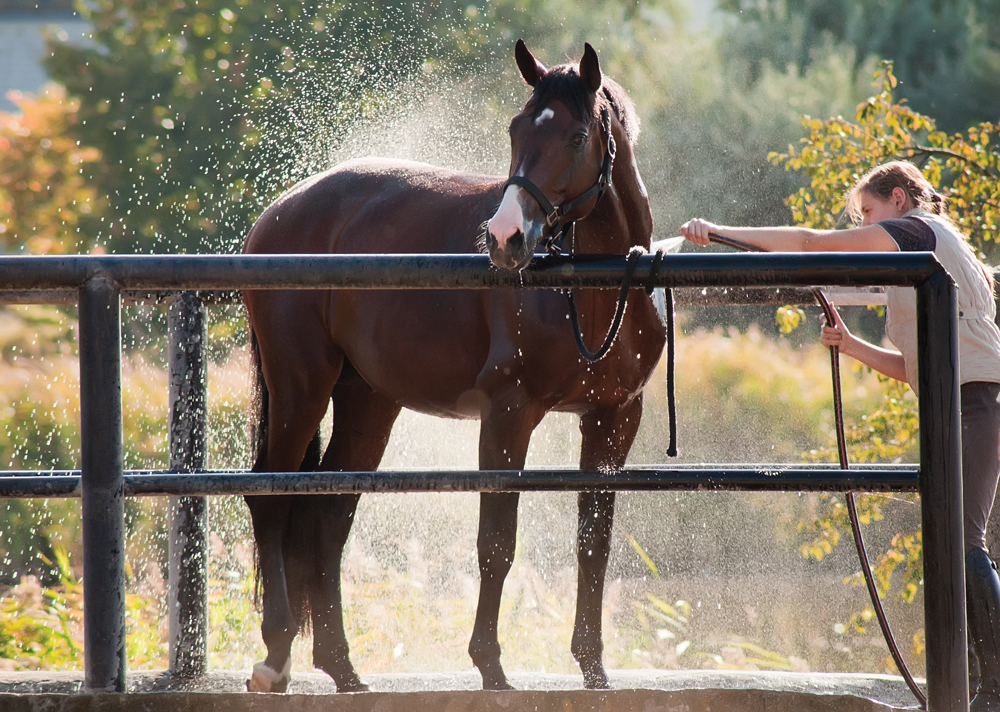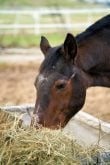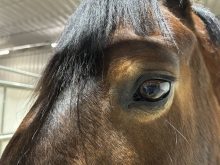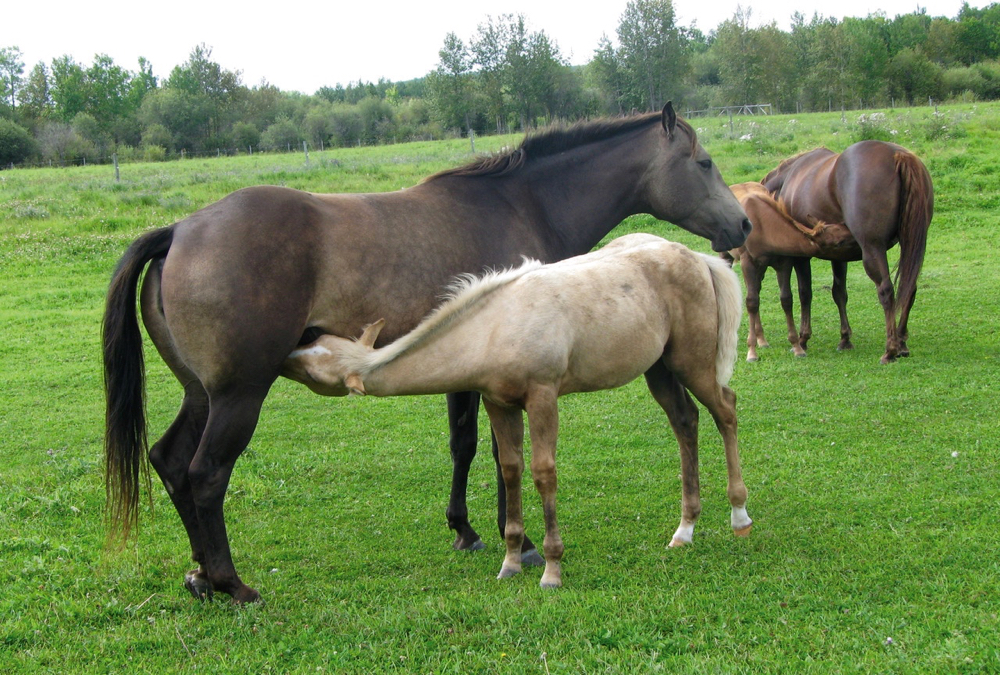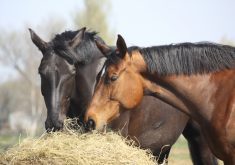Hot weather poses a unique set of challenges to the physiology of horses that are better equipped to deal with cold weather.
Horses naturally benefit from the heat produced as a byproduct of their own digestive processes and muscular activity. However, as temperatures rise beyond approximately 24 C and humidity increases, horses struggle to effectively cool themselves and are at a risk for heat stress. The exercising horse relies on the evaporative losses or sweating to cool itself and dissipate heat generated through sustained and strenuous muscular activity. The sweating horse loses both water and electrolytes which can lead to dehydration and electrolyte imbalance, further compounding the ill effects of the heat stress.
Read Also

Horns aren’t unlocking anytime soon on livestock transport standards
Standards good enough meet the definition of “humane” animal transportation still vary widely between what what industry wants, what animal rights advocates want and, between the two, what federal regulators decide is good enough.
Both exercising and non-exercising horses exhibit heat stress and symptoms range from mental dullness and poor performance to potentially fatal heatstroke. Heat builds up just as easily in the non-exercising horse as the exercising horse, particularly those confined to enclosed trailers, small drylots with no shade, and closed or poorly ventilated stables.
Factors other than hot weather that contribute to heat stress in horses are obesity, metabolic conditions, long hair coats, lack of conditioning, poor acclimatization, excessive and strenuous work, transportation, inability to sweat (anhidrosis), and heavy muscling. Foals are particularly sensitive to hyperthermia with their naive thermoregulatory abilities and can overheat simply from being in the hot sun. Horses that are overweight and not used to regular hard physical activity are at the greatest risk. Additionally any horse that does not have access to salt and minerals will struggle with heat to a greater degree.
Common terms for describing the “overheated” horse include hyperthermia, heat exhaustion, heat cramps, heatstroke or sunstroke and represent severity along a continuum. “Overheating” or hyperthermia occurs when the horse’s temperature rises beyond 41 C (106 F). This is often coupled with dehydration and electrolyte disturbances.
Physiology changes
As heat stress becomes heat exhaustion, the physiology of the horse becomes distressed and begins to change. Ironically horses that develop anhidrosis even cease to sweat as heat exhaustion progresses. Heat exhaustion can advance to heatstroke quickly. If a horse’s body temperature rises to 41 C (106 F) and beyond for prolonged periods the consequences to health can be serious.
The “overheated” horse typically begins to lack focus and/or state of presence, becoming dull and inattentive. The exercising horse will be profusely sweating, becoming dehydrated and fatigued. As the horse becomes more distressed and exhausted by the heat its heart will climb to over 60 beats per minute and remain elevated while its breathing becomes rapid and shallow. Some horses may begin to pant. Exercising horses refuse to work, drip sweat, and some horses exhibit “thumping” — a spasmodic jerking of the diaphragm or flanks in response to the electrolyte disturbances. Heat cramps may occur as a result of electrolyte loss and disturbances. Signs of heat cramps include spasms and twitching of the abdominal and/or large leg muscles. The horse may move very stiffly and abnormally, similar to a horse that is tying up. Other horses appear to have colic.
Left untreated, heat exhaustion can rapidly turn into heatstroke with horses developing evidence of central nervous system dysfunction: inco-ordination, weaving, stumbling, staggering, and falling. A coma and death may follow if the horse is not treated immediately. Complications from the heatstroke include colic, laminitis, liver and kidney failure, respiratory complications, and “tying up.”
If hyperthermia is suspected, taking the horse’s rectal temperature provides a valuable parameter to monitor its well-being. Horses have a regulated internal set point within a very narrow range and a rectal temperature exceeding 40.5 C (105 F) is abnormal in any horse and poses a dangerous situation.
The “overheated” horse often requires active intervention from the moment it is recognized to be a problem to avoid a downward spiral of heat exhaustion and heatstroke. The extent of the measures taken depends greatly upon the factors that have led to the heat stress. If the horse is still alert, still sweating normally, and its rectal temperature reads 40 C (104 F) it is “overheated” but not necessarily in danger.
Care would involve environmental correction as much as possible, cessation of exercise, and cooling out the horse by walking as well as offering the horse plenty of opportunity to drink. As the horse starts to edge towards heat exhaustion aggressive cooling measure will become necessary.
Cool to cold water hosing of the large hindquarter muscles and large blood vessels that travel along the inside of the horse’s hind limb and under the neck will act to quickly dissipate and carry excess heat away from the body. Gentle walking will encourage circulation to bring more heated blood to the surface of the skin for cooling.
Standing the horse up in a breeze whether natural or created by fans will increase evaporative losses. If the horse’s body temperature climbs upward into the danger zone of 41 C (106 F) and higher, douse as much of its body as possible with the coldest water available. Sponge the horse with cold water and apply ice packs to the large vessels along the insides of the hind legs. If its temperature does not come back into the normal range of 38.5 C (102 F) and the horse is not back to normal eating and drinking readily within an hour, then summon veterinary assistance. It may need intravenous hydration and further measures to support its recovery.
Heat stress and its various forms of distress can be prevented with proper management and conditioning. The most important single factor in preventing heat stress is providing plenty of clean, fresh water and trace mineralized salt to all horses. Sensibility when asking the horse to perform during the heat and a watchful eye for early signs of distress are equally important.


